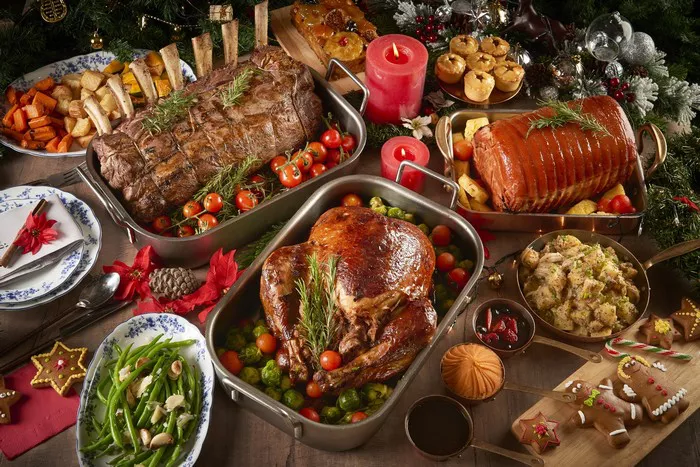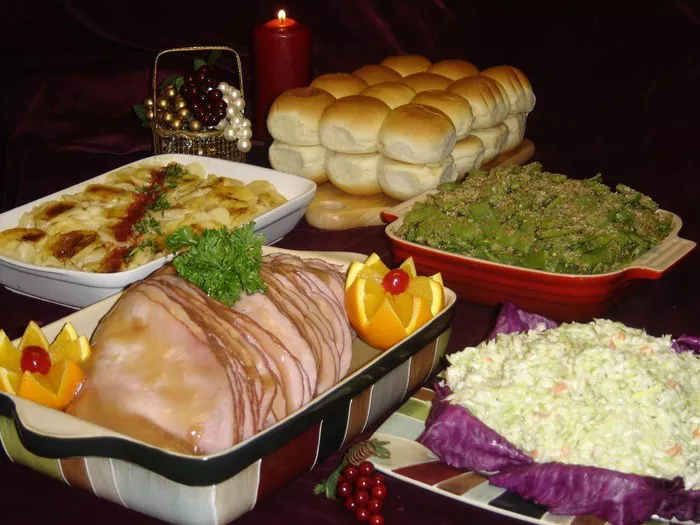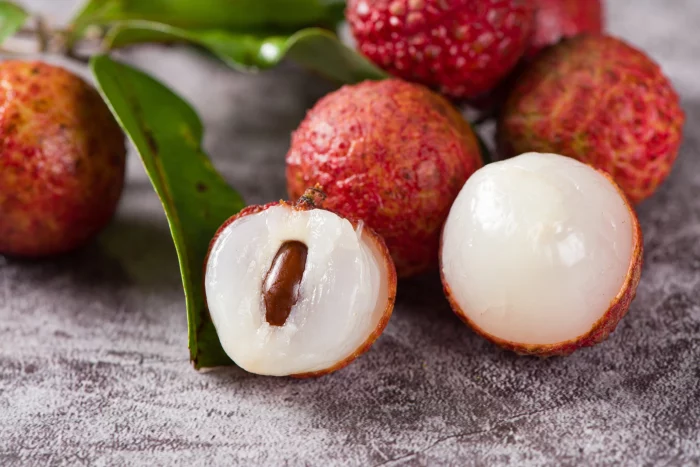Cheesecake, with its smooth and velvety texture, is a dessert that has delighted taste buds for centuries. Whether enjoyed plain or adorned with various toppings and flavors, cheesecake is a true indulgence. But have you ever wondered what exactly goes into making this delectable treat? In this article, we’ll explore the ingredients and process behind creating a classic cheesecake that is sure to satisfy your cravings.
The Foundation
Every great cheesecake starts with a solid foundation, and that foundation is the crust. The crust adds a contrasting texture to the creamy filling and provides a base for the cake. Traditionally, graham crackers are used to make the crust, though other options such as digestive biscuits or even cookies can be used as well. The crackers or cookies are crushed and mixed with melted butter to form a crumbly mixture. This mixture is then pressed into the bottom of the baking pan, creating a firm base for the cheesecake.
The Filling
The filling is the heart and soul of a cheesecake, giving it its rich and creamy character. The primary ingredient in the filling is cream cheese, which provides the smooth texture and tangy flavor that cheesecakes are known for. Cream cheese is made by blending milk and cream with lactic acid bacteria, which gives it its distinct taste and consistency.
In addition to cream cheese, cheesecake fillings often include sugar, eggs, and vanilla extract. The sugar adds sweetness and helps to balance the tanginess of the cream cheese, while the eggs contribute to the smoothness and structure of the filling. Vanilla extract enhances the overall flavor profile of the cheesecake, adding a subtle and aromatic note.
Variations and Flavors
While the classic cheesecake is a delight on its own, there are endless possibilities when it comes to flavors and variations. By incorporating different ingredients and techniques, you can create a cheesecake that suits your taste preferences and adds a unique twist to this beloved dessert.
Fruit Flavors
Adding fruit to the cheesecake filling can provide a refreshing and tangy element. Fresh or pureed fruits such as strawberries, blueberries, or raspberries are commonly used. They can be mixed into the filling or swirled on top before baking, resulting in a vibrant and fruity cheesecake.
Chocolate Delights
For chocolate lovers, a chocolate cheesecake is a dream come true. Cocoa powder or melted chocolate can be incorporated into the filling, creating a luscious and decadent treat. For an even richer experience, chocolate ganache can be poured on top of the baked cheesecake, adding an irresistible layer of indulgence.
Savory Sensations
Cheesecake doesn’t have to be limited to sweet flavors. Savory cheesecakes, often made with ingredients such as herbs, vegetables, or even seafood, offer a unique twist on the traditional dessert. These savory creations can be served as appetizers or as a delightful addition to a brunch menu.
Crust Variations
While graham cracker crusts are the most common, there are many alternatives to explore. Crushed cookies, such as chocolate or shortbread, can be used for a different flavor profile. For a gluten-free option, nuts or gluten-free cookies can be used as a base, offering a delightful alternative for those with dietary restrictions.
Toppings and Garnishes
Once the cheesecake is baked to perfection and has cooled, it’s time to add the finishing touches. Toppings and garnishes can elevate the flavor and presentation of the cheesecake, taking it from delicious to truly spectacular.
Fruit Coulis
A fruit coulis, made by simmering fruit with sugar and water and then pureeing it, adds a burst of color and fruity flavor. It can be drizzled over the cheesecake or used as a pool around each slice, creating an eye-catching design.
Whipped Cream
A classic choice, a dollop of freshly whipped cream on top of a slice of cheesecake adds a light and airy contrast to the dense filling. It can be plain or flavored with extracts or liqueurs to complement the cheesecake’s flavors.
Caramel or Chocolate Sauce
For an extra touch of sweetness, a drizzle of caramel or chocolate sauce over the cheesecake is hard to resist. The smooth and gooey texture of the sauce enhances the overall richness of the dessert.
Fresh Fruit
Slices of fresh fruit can be arranged on top of the cheesecake, adding a vibrant and natural element. Strawberries, raspberries, or kiwi slices are popular choices that not only provide visual appeal but also enhance the overall taste.
Tips for Baking a Cheesecake
While the ingredients are key to a delicious cheesecake, the baking process plays a crucial role in achieving the perfect texture and flavor. Here are some tips to ensure your cheesecake turns out beautifully every time:
Room Temperature Ingredients
To ensure a smooth and well-incorporated filling, make sure all the ingredients are at room temperature before you begin. This includes the cream cheese, eggs, and any other dairy products. Room temperature ingredients blend together more easily, resulting in a creamier and homogeneous filling.
Avoid Overmixing
When combining the ingredients for the filling, be cautious not to overmix. Overmixing can lead to incorporating too much air into the batter, which may cause the cheesecake to crack during baking. Mix until the ingredients are just combined and smooth, taking care to scrape down the sides of the bowl to ensure everything is evenly mixed.
Water Bath Technique
To prevent the cheesecake from cracking and ensure even baking, consider using a water bath. A water bath involves placing the springform pan with the cheesecake into a larger pan filled with hot water. This helps to create a gentle and moist heat environment during baking, reducing the chances of cracks forming on the surface of the cheesecake.
Slow and Low Baking
Cheesecakes are best baked at a low temperature for a longer period. This slow baking process allows the filling to cook evenly and prevents the cheesecake from drying out or browning too quickly. Follow the recipe instructions for the recommended baking time and temperature, and avoid opening the oven door during the initial baking period to maintain a consistent temperature.
Cooling and Chilling
After the cheesecake is baked, it’s important to cool it properly to set the filling and achieve the desired texture. Allow the cheesecake to cool completely at room temperature before transferring it to the refrigerator. Once chilled, it’s best to let the cheesecake rest in the refrigerator for at least a few hours or overnight. This resting period helps the flavors to meld and the texture to become even more firm and creamy.
Slice with Care
When it’s time to serve the cheesecake, use a sharp knife dipped in hot water to ensure clean and smooth slices. Wipe the knife clean between each cut to prevent the filling from sticking. This will help you achieve picture-perfect slices that are as visually appealing as they are delicious.
Storing and Freezing
If you have leftovers or want to make cheesecake in advance, proper storage is key. Cheesecake can be stored in an airtight container in the refrigerator for up to 5 days. For longer storage, you can freeze the cheesecake. Wrap it tightly in plastic wrap and place it in a freezer-safe container. Cheesecake can be frozen for up to 2-3 months, but make sure to thaw it in the refrigerator overnight before serving.
Exploring Cheesecake Around the World
While the classic cheesecake holds a special place in our hearts, it’s fascinating to discover how different cultures have put their unique spin on this beloved dessert. Here are a few international variations of cheesecake that showcase the diverse and creative ways in which it can be enjoyed:
New York Cheesecake
Arguably the most iconic and well-known variation, New York cheesecake is characterized by its dense and creamy texture. It is typically made with a combination of cream cheese, eggs, sugar, and heavy cream. The New York-style cheesecake is known for its tall profile and is often served plain or with a simple fruit topping.
Japanese Cheesecake
Also known as “cotton cheesecake” or “soufflé cheesecake,” the Japanese variation of cheesecake is incredibly light and fluffy. It incorporates cream cheese, eggs, sugar, and a small amount of flour. Japanese cheesecake is baked in a water bath to create a delicate and airy texture that melts in your mouth.
Italian Cheesecake
In Italy, cheesecake takes on a ricotta-based filling. Ricotta cheese, sugar, eggs, and flavorings such as lemon zest or vanilla extract are combined to create a smooth and slightly grainy texture. Italian cheesecake is often lighter in taste and is traditionally enjoyed with a dusting of powdered sugar.
German Cheesecake
German cheesecake, known as “Käsekuchen,” features a crustless filling that showcases the rich and tangy flavor of quark cheese. Quark, a fresh and creamy cheese, is combined with eggs, sugar, and vanilla to create a smooth and velvety filling. German cheesecake is often served with a dollop of whipped cream or a fruit compote.
Greek Cheesecake
In Greece, cheesecake is called “tiropita” and is often made with a combination of cream cheese and feta cheese. The filling is flavored with herbs such as dill or mint, giving it a savory twist. Greek cheesecake is typically baked in a phyllo pastry crust and served in individual portions.
Conclusion
Cheesecake, with its creamy filling, buttery crust, and endless flavor possibilities, is a dessert that has stood the test of time. Whether you prefer the classic version or enjoy exploring the countless variations and flavors, cheesecake is a treat that never fails to satisfy.
From its humble beginnings to its evolution into a beloved dessert enjoyed worldwide, the ingredients that make up a cheesecake have remained consistent. Cream cheese, sugar, eggs, and vanilla extract create a smooth and indulgent filling, while the crust provides a firm base for this delightful creation.
So the next time you savor a slice of cheesecake, take a moment to appreciate the craftsmanship and care that went into making this delectable dessert. Whether it’s a simple and elegant plain cheesecake or a decadent chocolate-swirled creation, cheesecake is a true culinary masterpiece that continues to captivate dessert lovers around the globe.






















